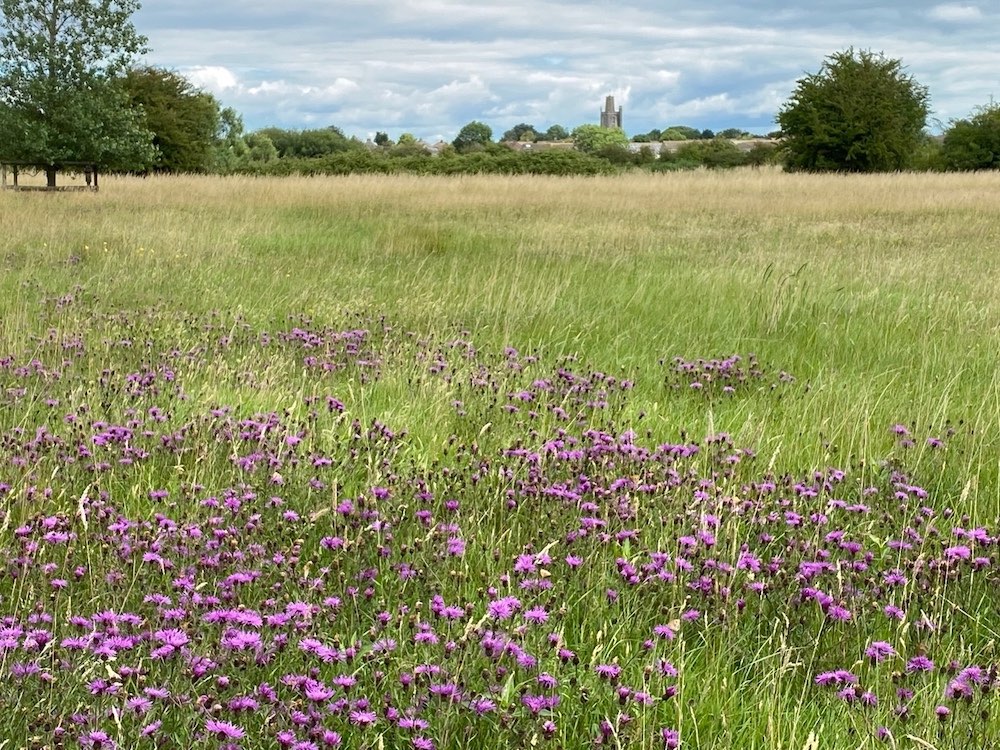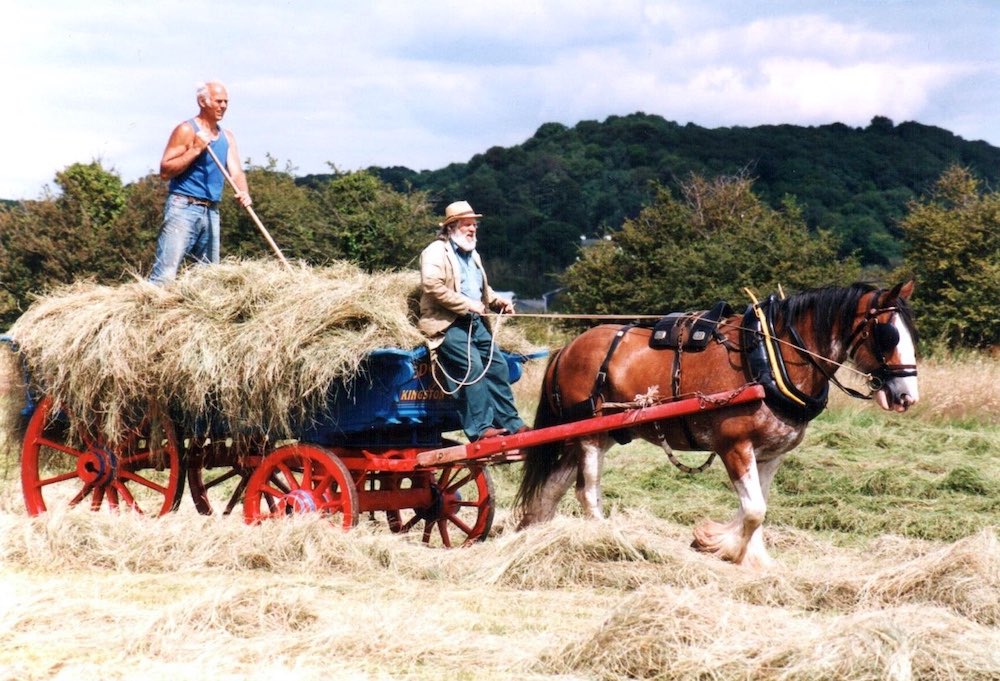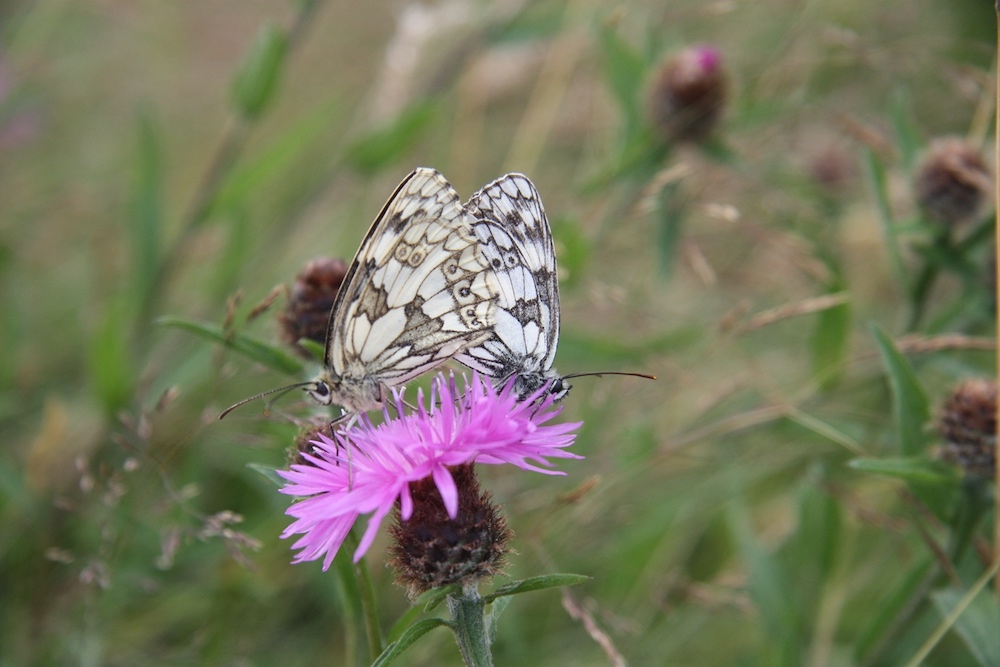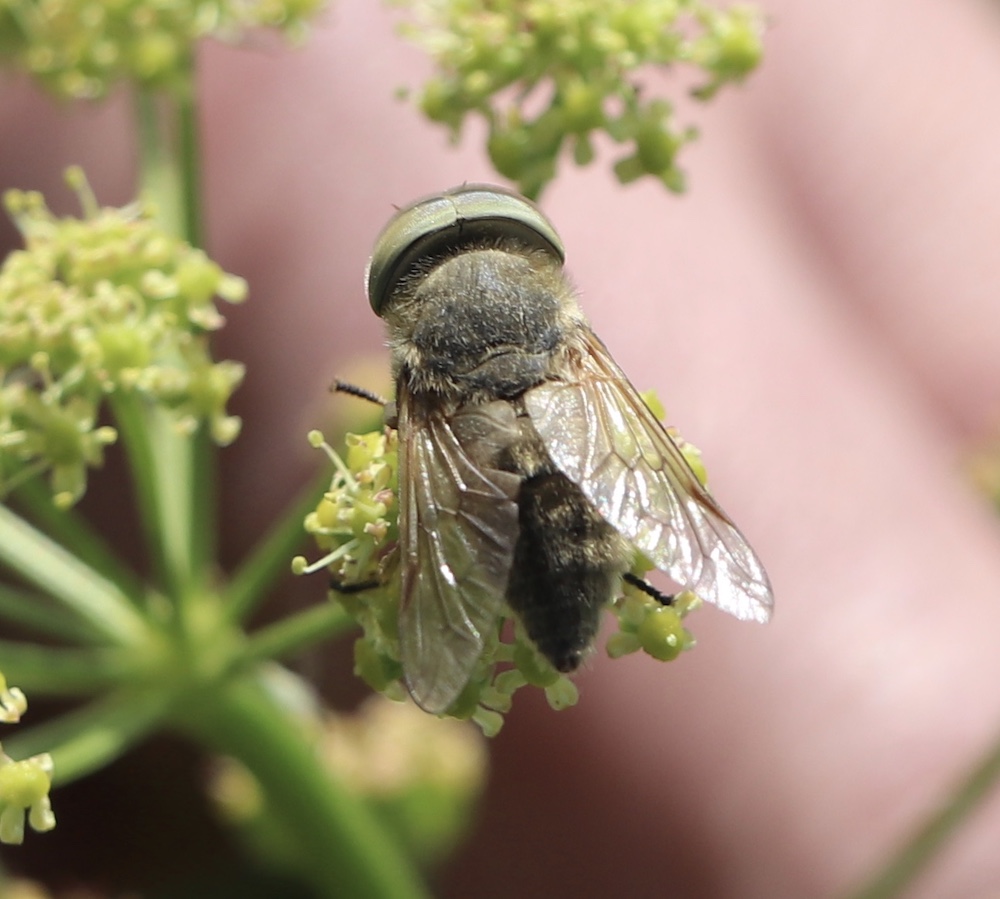From Nags to Niches – Having a Field Day
- 10 May 2022
-
 Faith Moulin
Faith Moulin
- Congresbury Moor, Insects
This is the third in a short series of articles about YACWAG’s fields and their secrets.
New Croft (meaning new enclosure) is an ancient hay meadow on Congresbury Moor which YACWAG bought in 2000. It was enclosed from the Great Moor north of Congresbury in the 17h century to protect the hay from wandering livestock. It was owned and held as an investment by Queen Elizabeth’s Hospital, a Bristol private school which owned significant lands around Congresbury. I was surprised recently to learn that they still own Congresbury allotments. By the time Mrs Meaker sold New Croft to YACWAG, it was permanent pasture, with heavy cattle giving the damp ground a pounding.

In 2002 we wanted to draw local people’s attention to the fields that surround us. Thanks to funding from the National Lottery Awards for All, YACWAG put on an indoor celebration of all things to do with fields at Claverham Village Hall and arranged a big public event ‘in the field’. We were joined by local farmers and historical farm equipment enthusiasts and they demonstrated hay-making the old-fashioned way. In 2003 we did it all again, only this time with the addition of Bob Cook’s shire horses from Long Ashton and a beautiful hay cart belonging to the Harris family at Kingston Seymour. These events in beautiful sunny weather drew the crowds and showed off our lovely field. One of the farmers said, ‘There’s some wild flowers there,’ and he mowed round it. It was the first plant of knapweed we had seen in the local fields.

We continued with an annual haycut and by the time we had owned New Croft for ten years other wild flowers were appearing. The field was changing into the wild flower meadow it had been for centuries. A creamy flowered umbellifer, Pepper Saxifrage, popped up. This rather inconspicuous plant was one we did not know but the books tell us it grows in old hay meadows on clay, so it is spot on. To start with we counted about a dozen plants. Now they are spreading up and down the field and probably number about fifty plants now.
After another ten years of taking hay once a year and not replacing any of the nutrients taken out, the grass in this field is more sparse and weak, just as it would have been in days gone by. The hay yield is less and less, but the wild flowers thrive with less competition from grass. We aim to cut as late as possible so that insects can complete their life cycles. Vast swathes of purple Knapweed and Tufted Vetch provide nectar for bees and butterflies. Now another umbellifer has joined the Pepper Saxifrage: Corky-fruited Water Dropwort, with white flower heads. Insects just love these open top flowers.
Grassland butterflies have done well in this field. Marbled White butterflies lay their eggs by dropping them like bombs as they fly over the grass. The caterpillars depend on a variety of grasses so the female butterfly is very particular about where to drop her eggs and generally she doesn’t move far from where she herself was hatched. As the caterpillars grow they move from fine grasses onto coarser grass stems and eventually tuck themselves down at ground level to pupate for the winter. In the last week of June or the first week of July, like clockwork, the butterflies will hatch and mate and start again. The timing of the hay cut is critical to this butterfly. If YACWAG started cutting grass twice during the summer we would remove the caterpillars along with the silage. It is the same story for Meadow Brown butterflies, also grass feeders, and day-flying Burnet moths.

New Croft made national invertebrate news when rare Four-lined Horseflies which had been photographed in the field in 2015, thanks to Higgy’s interest, enthusiasm and excellent photos were verified by a professional entomologist in 2019. We even got a mention in the British Journal of Entomology.

One of the highlights of 2019 was taking a botanist from Avon Wildlife Trust to see our fields. She was very excited to see New Croft and when Tony suggested the fields were unique in the local area, she said she had not seen any like it in the whole of Avon. Her survey has led to New Croft being designated ‘species-rich grassland’ in YACWAG’s Higher Tier agri-environment scheme award. I can remember Stephen Parker of Natural England telling us it would take 100 years to see a field turn into a wild flower meadow naturally. To witness the changes in New Croft over a mere twenty years is one of the most rewarding experiences of my life and is certainly one of YACWAG’s best and most enduring achievements. The process isn’t complete, of course, and who knows what wild flowers we will see in another ten years?
New Croft allowed YACWAG to discover its secrets – they just needed coaxing out of the ground. The field now resembles an impressionist painting in mid summer, splashed with purple and yellow, and humming with the sound of insects and the shrill leg-rubbing of grasshoppers which have found their niche in the long grass.
Learn more about New Croft and our other Congresbury Moor Reserves
© Copyright YACWAG, or original authors. All rights reserved. | Registered charity 1076362 | Privacy policy | Cookie policy | Terms & Conditions |Web design: StanfordGraphics


